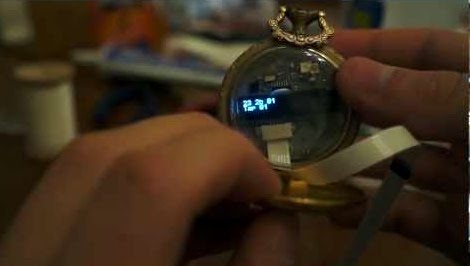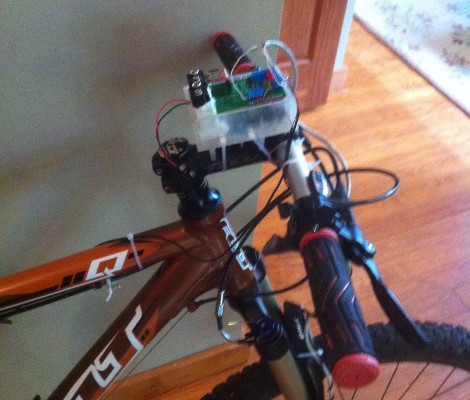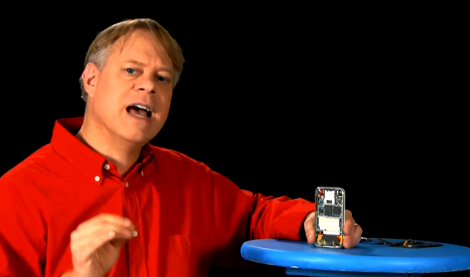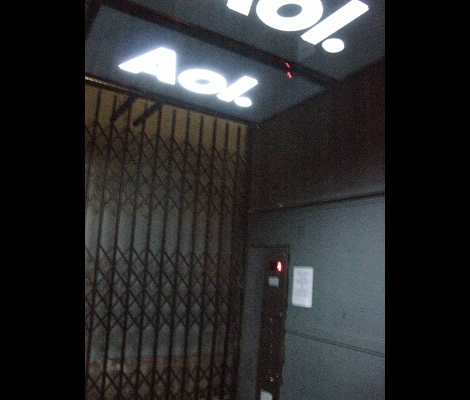
A friend of [CNLohr’s] used the mechanism from an old pocket watch in an art piece, but left him with the enclosure. It’s an interesting looking object that feels great in your hand so he decided to fill it with his own electronics, thereby giving it a new life. He’s showing off an early version of the hardware in the video, but plans to send off another version of the board soon to add a few features.
You can see that the round PCB is small enough to fit in the space vacated by the original hardware. The ribbon cable is used to connect to the programmer and we think it’s also the power source for this demonstration. There’s a small Densitron display that’s reading out hex values from the accelerometer. Many of these mems chip (you can learn how they work from this post) include a hardware tap detector. This meant you can tap your finger on the device and the chip will signal an input to whatever chip is attached to it. That’s a great option for user input, and it’s what [CNLohr] chose as the select button here. He tilts the watch to one side, then taps to turn on the LED. That’s all for now, but we like the promise it shows and can’t wait for updates!
Continue reading “Pocketwatch Retrofit Takes Input From Accelerometer”
















